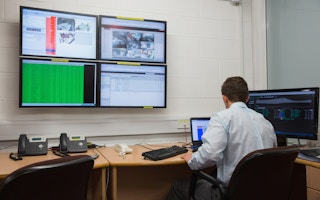We live and work in an increasingly turbulent environment. As the demand for energy escalates worldwide, organisations are faced with the challenge of doing more with less. IT departments, in particular, are stretched to capacity, putting a strain on current resources that is not sustainable in the long term.
To continue reading, subscribe to Eco‑Business.
There's something for everyone. We offer a range of subscription plans.
- Access our stories and receive our Insights Weekly newsletter with the free EB Member plan.
- Unlock unlimited access to our content and archive with EB Circle.
- Publish your content with EB Premium.
According to a recent report by the International Energy Agency (IEA), Southeast Asia’s energy demand is projected to be 80 per cent higher by 2035, fuelled by an economy that is expected to triple and a population that will increase by nearly 25 per cent. Compounding the situation is the reality that energy demands, which contribute to CO2 emissions, are set to double by 2050.
In order for organisations to remain sustainable and operable in this turbulent economy, they need to re-evaluate their strategy and account for energy management solutions. By implementing integrated strategies in industrial, commercial, or residential buildings, businesses can save up to 30 per cent of three quarters of the projected global energy consumption.
Here are some best practices organisations can consider:
Establish an ecosystem that supports positive growth
Implement a framework that creates an intelligent energy management ecosystem. Doing so enables more unified, efficient and effective power management, processes and machines, IT rooms, buildings and security systems.
Specifically looking at IT rooms, the IT manager’s responsibility is typically to monitor network connectivity, rack systems, ensure that there is an uninterruptible power supply, control cooling, and manage surveillance. By having an integrated solution, the site manager can supervise the IT room, along with the other remaining domains, from one location, ensuring efficient management and business continuity.
Know how IT will impact your business
“
In order for organisations to remain sustainable and operable in this turbulent economy, they need to re-evaluate their strategy and account for energy management solutions. By implementing integrated strategies in industrial, commercial, or residential buildings, businesses can save up to 30 per cent of three quarters of the projected global energy consumption.
Equip data centres to process, analyse and compute information so they can make informed decisions to meet business and service-oriented goals. With a Data Centre Infrastructure Management (DCIM) solution - which collects and manages data about a data centre’s assets, resource use and operation status throughout its lifecycle - you can have greater control over your data environment. This grants you the ability to identify hot spots, overloaded servers, and adjust them accordingly, enhancing the facility’s efficiency.
Virtualisation, which refers to creating a virtual version of physical networks, servers and storage resources, is one of the most significant drivers of DCIM, and is a key step to an economical future.This solution saves space and reduces the redundancy of having multiple dedicated machines for individual tasks by centralising all functions into a single machine hosting virtual servers.
The benefits of a well-implemented DCIM system are many, aligning with a more efficient and subsequently more responsible strategy. DCIM helps operators safely maximise their use of power, cooling, and space capacities for current business needs and future ones. Additionally, the solution optimises the data centre’s performance, contributes to savings in energy, and reduces operating expenses by 20 per cent. All these equate to a more effective data centre that can better handle the added data complexity - including the increase in the variety and velocity of data - associated with future business growth and changing IT demands.
Become business-wise and future driven
Understand your current situation, but plan for the future by implementing a scalable and adaptable data centre solution. Modular, plug-and-play data centres, also known as prefabricated data centres, are pre-engineered and pretested to work together. Leading research firm Gartner highlighted in a report that the data centre is like an agile, living organism that evolves, and should therefore include flexible, modular, virtualised design principles. These flexible builds, which are assembled like building blocks, also make financial sense, enabling businesses to optimise the size of their facility so that it is more efficient and cost effective as they grow. In fact, right-sizing has the potential to reduce the total life cycle cost of a data centre by up to 13 per cent, 30 per cent of which is savings from the data centre’s physical infrastructure.
Ultimately, with demand for energy only intensifying and associated costs escalating, effective energy management solutions are imperative in helping businesses survive the test of time. Enterprises need to re-examine their strategy and recognise the immediate and long term cost and operational benefits of responsible green IT practices. It is these more efficient and effective processes that not only assist in business survival beyond the next 20 years, but also positively contribute to the larger picture of preserving the world’s increasingly scarce energy resources.
Pankaj Sharma is the IT business vice president for Schneider Electric Asia Pacific.











